UN-Backed Banker Alliance Announces “Green” Plan to Transform the Global Financial System
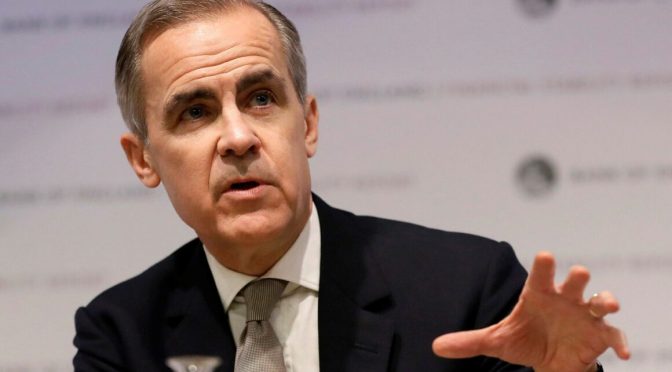
,
Geopolitics - NOVEMBER 21, 2021
The most powerful private financial interests in the world, under the cover of COP26, have developed a plan to transform the global financial system by fusing with institutions like the World Bank and using them to further erode national sovereignty in the developing world.
Unlimited Hangout — On Wednesday, an “industry-led and UN-convened” alliance of private banking and financial institutions announced plans at the COP26 conference to overhaul the role of global and regional financial institutions, including the World Bank and IMF, as part of a broader plan to “transform” the global financial system.
The officially stated purpose of this proposed overhaul, per alliance members, is to promote the transition to a “net zero” economy. However, the group’s proposed “reimagining” of international financial institutions, according to their recently published “progress report,” would also move to merge these institutions with the private-banking interests that compose the alliance;
create a new system of “global financial governance”; and erode national sovereignty among developing countries by forcing them to establish business environments deemed “friendly” to the interests of alliance members. In other words, the powerful banking interests that compose this group are pushing to recreate the entire global financial system for their benefit under the guise of promoting sustainability.
This alliance, called the Glasgow Financial Alliance for Net Zero (GFANZ), was launched in April by John Kerry, US Special Presidential Envoy for Climate Change; Janet Yellen, US Secretary of the Treasury and former chair of the Federal Reserve; and Mark Carney, UN Special Envoy for Climate Action and Finance and former chair of the Bank of England and Bank of Canada. Carney, who is also the UK prime minister’s Finance Advisor for the COP26 conference, currently cochairs the alliance with US billionaire and former mayor of New York City, Michael Bloomberg.
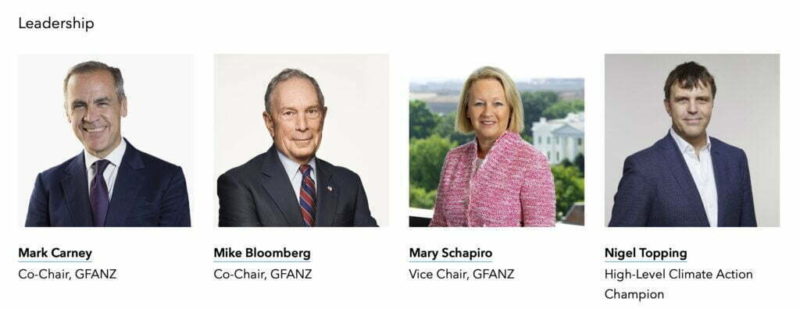
On its creation, GFANZ stated that it would “provide a forum for strategic coordination among the leadership of finance institutions from across the finance sector to accelerate the transition to a net zero economy” and “mobilize the trillions of dollars necessary” to accomplish the group’s zero emissions goals. At the time of the alliance’s launch, UK prime minister Boris Johnson described GFANZ as “uniting the world’s banks and financial institutions behind the global transition to net zero,”
while John Kerry noted that “the largest financial players in the world recognize energy transition represents a vast commercial opportunity.” In analyzing those two statements together, it seems clear that GFANZ has united the world’s most powerful private banks and financial institutions behind what it sees, first and foremost, as “a vast commercial opportunity,” the exploitation of which it is marketing as a “planetary imperative.”
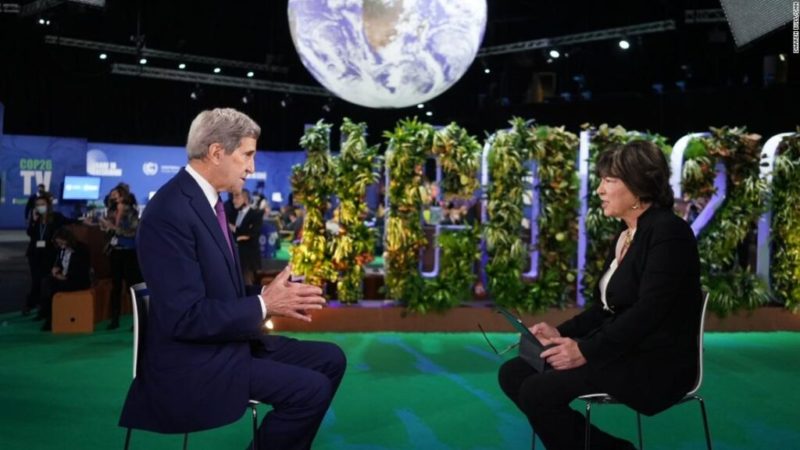
GFANZ is composed of several “subsector alliances,” including the Net Zero Asset Managers Initiative (NZAM), the Net Zero Asset Owner Alliance (NZAOA), and the Net Zero Banking Alliance (NZBA). Together, they command a formidable part of global private banking and finance interests, with the NZBA alone currently representing 43 percent of all global banking assets.
However, the “largest financial players” who dominate GFANZ include the CEOs of BlackRock, Citi, Bank of America, Banco Santander, and HSBC, as well as David Schwimmer, CEO of the London Stock Exchange Group and Nili Gilbert, chair of the Investment Committee of the David Rockefeller Fund.
Notably, another Rockefeller-connected entity, the Rockefeller Foundation, recently played a pivotal role in the creation of Natural Asset Corporations (NACs) in September. These NACs seek to create a new asset class that would put the natural world, as well as the ecological processes that underpin all life, up for sale under the guise of “protecting” them. Principals of GFANZ, including BlackRock’s Larry Fink, have long been enthusiastic about the prospects of NACs and other related efforts to financialize the natural world and he has also played a key role in marketing such financialization as necessary to combat climate change.
As part of COP26, GFANZ— a key group at that conference—is publishing a plan aimed at scaling “private capital flows to emerging and developing economies.” Per the alliance’s press release, this plan focuses on “the development of country platforms to connect the now enormous private capital committed to net zero with country projects, scaling blended finance through MDBs [multilateral development banks] and developing high integrity, credible global carbon markets.”
The press release notes that this “enormous private capital” is money that alliance members seek to invest in emerging and developing countries, estimated at over $130 trillion, and that—in order to deploy these trillions in investment—“the global financial system is being transformed” by this very alliance in coordination with the group that convened them, the United Nations.
Proposing a Takeover
Details of GFANZ’s plan to deploy trillions of member investments into emerging markets and developing countries was published in the alliance’s inaugural “Progress Report,” the release of which was timed to coincide with the COP26 conference. The report details the alliance’s “near-term work plan and ambitions,” which the alliance succinctly summarizes as a “program of work to transform the financial system.”
The report notes that the alliance has moved from the “commitment” stage to the “engagement” stage, with the main focus of the engagement stage being the “mobilization of private capital into emerging markets and developing countries through private-sector leadership and public-private collaboration.” In doing so, per the report, GFANZ seeks to create “an international financial architecture” that will increase levels of private investment from alliance members in those economies. Their main objectives in this regard revolve around the creation of “ambitious country platforms” and increased collaboration between MDBs and the private financial sector.
Per GFANZ, a “country platform” is defined as a mechanism that convenes and aligns “stakeholders,” that is, a mechanism for public-private partnership/stakeholder capitalism, “around a specific issue or geography.” Examples offered include Mike Bloomberg’s Climate Finance Leadership Initiative (CFLI), which is partnered with Goldman Sachs and HSBC among other private-sector institutions.
While framed as being driven by “stakeholders,” existing examples of “country platforms” offered by the GFANZ are either private sector-led initiatives, like the CFLI, or public-private partnerships that are dominated by powerful multinational corporations and billionaires.
As recently explained by journalist and researcher Iain Davis, these “stakeholder capitalism” mechanism models, despite being presented as offering a “more responsible” form of capitalism, allow corporations and private entities to participate in forming the regulations that govern their own markets and giving them a greatly increased role in political decision making by placing them on an equal footing with national governments. It is essentially a creative way of marketing “corporatism,” the definition of fascism infamously supplied by Italian dictator Benito Mussolini.
In addition to the creation of “corporatist” “country platforms” that focus on specific areas and/or issues in the developing world, GFANZ aims to also further “corporatize” multilateral development banks (MDBs) and development finance institutions (DFIs) in order to better fulfill the investment goals of alliance members. Per the alliance, this is described as increasing “MDB-private sector collaboration.” The GFANZ report notes that “MDBs play a critical role in helping to grow investment flows” in the developing world.
MDBs, like the World Bank, have long been criticized for accomplishing this task by trapping developing nations in debt and then using that debt to force those nations to deregulate markets (specifically financial markets), privatize state assets and implement unpopular austerity policies. The GFANZ report makes it clear that the alliance now seeks to use these same, controversial tactics of MDBs by forcing even greater deregulation on developing countries to facilitate “green” investments from alliance members.
The report explicitly states that MDBs should be used to prompt developing nations “to create the right high-level, cross-cutting enabling environments” for alliance members’ investments in those nations. The significantly greater levels of private-capital investment, which are needed to reach net zero per GFANZ, require that MDBs are used to prompt developing nations to “establish investment-friendly business environments; a replicable framework for deploying private capital investments; and pipelines of bankable investment opportunities.” GFANZ then notes that “private capital and investment will flow to these projects if governments and policymakers create the appropriate conditions,” that is, enable environments for private-sector investments.
In other words, through the proposed increase in private-sector involvement in MDBs, such as the World Bank and regional development banks, alliance members seek to use MDBs to globally impose massive and extensive deregulation on developing countries by using the decarbonization push as justification. No longer must MDBs entrap developing nations in debt to force policies that benefit foreign and multinational private-sector entities, as climate change-related justifications can now be used for the same ends.
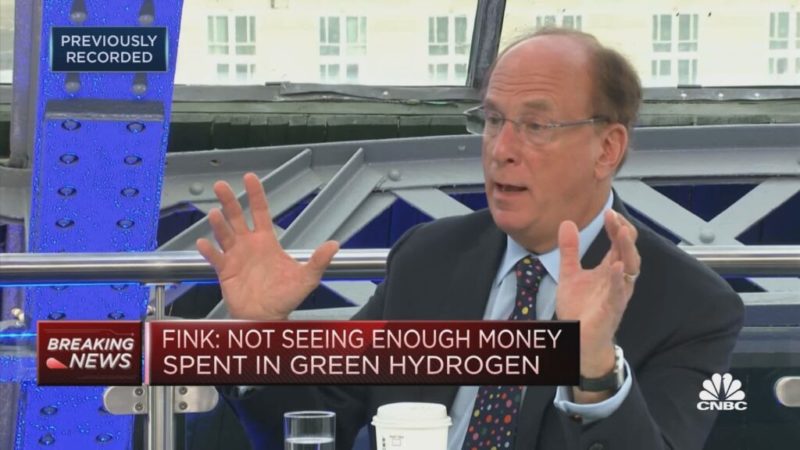
This new modality for MDBs, along with their fusion with the private sector, is ultimately what GFANZ proposes in terms of “reimagining” these institutions. GFANZ principal and BlackRock CEO Larry Fink, during a COP26 panel that took place on November 2, explicitly referred to the plan to overhaul these institutions when he said: “If we’re going to be serious about climate change in the emerging world, we’re going to have to really focus on the reimagination of the World Bank and the IMF.”
Fink continued:
They are the senior lender, and not enough private capital’s coming into the emerging world today because of the risks associated with the political risk, investing in brownfield investments — if we are serious about elevating investment capital in the emerging world. . . . I’m urging the owners of those institutions, the equity owners, to focus on how we reimagine these institutions and rethink their charter.
GFANZ’s proposed plans to reimagine MDBs are particularly alarming given how leaked US military documents show that such banks are considered to be essentially “financial weapons” that have been used as “financial instruments and diplomatic instruments of US national power” as well as instruments of what those same documents refer to as the “current global governance system” that are used to force developing countries to adopt policies they otherwise would not.
In addition, given Fink’s statements, it should not be surprising that the GFANZ report notes that their effort to establish “country platforms” and alter the functioning and charters of MDBs is a key component of implementing preplanned recommendations aimed at “seizing the New Bretton Woods moment” and remaking the “global financial governance” system so that it “promote[s] economic stability and sustainable growth.”
As noted in other GFANZ documents and on their website, the goal of the alliance is the transformation of the global financial system, and it is obvious from member statements and alliance documents that the goal of that transformation is to facilitate the investment goals of alliance members beyond what is currently possible by using climate change-related dictates, rather than debt, as the means to that end.
The UN and the “Quiet Revolution”
In light of GFANZ’s membership and members’ ambitions, some may wonder why the United Nations would back such a predatory initiative. Doesn’t the United Nations, after all, chiefly work with national governments as opposed to private-sector interests?
Though that is certainly the prevailing public perception of the UN, the organization has for decades been following a “stakeholder capitalist” model that privileges the private sector and billionaire “philanthropists” over national governments, with the latter merely being tasked with creating “enabling environments” for the policies created by and for the benefit of the former.
Speaking to the World Economic Forum in 1998, Secretary General Kofi Annan made this shift explicit:
The United Nations has been transformed since we last met here in Davos. The Organization has undergone a complete overhaul that I have described as a ‘quiet revolution.” . . . A fundamental shift has occurred. The United Nations once dealt only with governments. By now we know that peace and prosperity cannot be achieved without partnerships involving governments, international organizations, the business community and civil society. . . . The business of the United Nations involves the businesses of the world.
With the UN now essentially a vehicle for the promotion of stakeholder capitalism, it is only fitting that it would “convene” and support the efforts of a group like GFANZ to extend that stakeholder capitalist model to other institutions involved in global governance, specifically global financial governance.
Allowing GFANZ members, that is, many of the largest private banks and financial institutions in the world, to fuse with MDBs, remake the “global financial governance system,” and gain increased control over political decisions in the emerging world is a banker’s dream come true. To get this far, all they have needed to do was to convince enough of the world’s population that such shifts are necessary due to the perceived urgency of climate change and the need to rapidly decarbonize the economy.
Yet, if put into practice, what will result is hardly a “greener” world but a world dominated by a small financial and technocratic elite who are free to profit and pillage from both “natural capital” and “human capital.”
Today, MDBs are used as “instruments of power” that utilize debt to force developing nations to implement policies that benefit foreign interests rather than their own national interests. If GFANZ gets its way, the MDBs of tomorrow will be used to essentially eliminate national sovereignty, privatize the “natural assets” (e.g., ecosystems, ecological processes) of the developing world, and force increasingly technocratic policies designed by global governance institutions and think tanks on ever more disenfranchised populations.
Though GFANZ has cloaked itself in lofty rhetoric of “saving the planet,” its plans ultimately amount to a corporate-led coup that will make the global financial system even more corrupt and predatory and further reduce the sovereignty of national governments in the developing world.
Feature photo | Former governor of the Bank of England Mark Carney, who is the U.N.’s special envoy for climate change, speaks at a Bank of England Financial Stability Report Press Conference, in London, Dec. 16, 2019. Kirsty Wigglesworth | AP
Whitney Webb has been a professional writer, researcher and journalist since 2016. She has written for several websites and, from 2017 to 2020, was a staff writer and senior investigative reporter for MintPress News. She currently writes for her own outlet Unlimited Hangout and contributes to The Last American Vagabond and MintPress News.
You can actually participate in the global efforts to cripple the Deep State organized criminal cabal's ability for genocide, while enjoying healthcare freedom at the same time, by boycotting Big Pharma for good.
Davos Billionaires Want to Save the Planet… Why Don’t Developing Countries Trust Them?
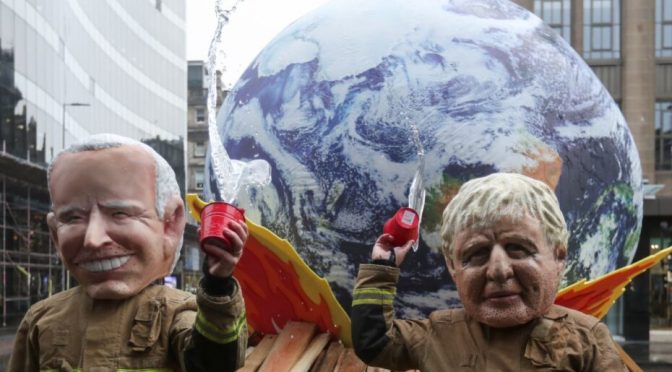
NOVEMBER 21, 2021 GEOPOLITICS
For the time being, the world’s developing sector is generally not going to accept being sacrificed on the altar of a new Gaia cult managed by a priesthood of Davos billionaires.
A miracle appears to be happening, as the multibillionaires of the World Economic Forum (WEF) appear to have grown consciences.
As if by magic, it appears that these gold collar elites no longer yearn for profit and power as they once had. As COP26 closes up its 12 day annual ceremonies, leading WEF-connected figures like Prince Charles, Jeff Bezos, Mario Draghi, Mark Carney and Klaus Schwab have announced a new system of economics that is based on virtue over profit!
According to the COP26 website, “95 high profile companies from a range of sectors commit to being ‘Nature Positive,’ agreeing to work towards halting and reversing the decline of nature by 2030.”
Prince Charles has boasted that he has coordinated 300 companies representing over $60 trillion to get on board with a global green transition, and after meeting with the Prince on November 2, Jeff Bezos announced his new $2 billion Earth Fund to protect nature’s ecosystems with a focus on Africa. Even Prime Minister Mario Draghi has joined Mark Carney on this new green path, as both men have moved beyond their old Goldman Sachs money worshiping days and embraced a better destiny. At the Nov 1 G20 Summit, Draghi embraced Prince Charles’ Green Markets Initiative and threw Italy’s full support behind the de-carbonization initiative.
The Prince himself (who also happens to be the nominal creator of the Great Reset Agenda launched in 2020), spoke as an enlightened statesman saying to the world’s leaders “as the enormity of the climate challenge dominates peoples’ conversations, from news rooms to living rooms, and as the future of humanity and Nature herself are at stake, it is surely time to set aside our differences and grasp this unique opportunity to launch a substantial green recovery by putting the global economy on a confident, sustainable trajectory and, thus, save our planet.”
Among the new array of financial mechanisms which we see being brought online in this war against humanity involve Bezos’ new Earth Fund, and Sir Robert Watson’s Living Planet Index (unveiled in 2018 at the World Economic Forum) and the new Rockefeller Foundation-sponsored Intrinsic Exchange Group (IEG) which seeks to turn global ecosystems worth an estimated $4 quadrillion into financial equity controllable by new private corporations (dubbed “natural asset companies”).
On its website, the IEG stated:
“In partnership with the New York Stock Exchange, IEG is providing a word-class platform to list these companies for trading, enabling the conversion of natural assets into financial capital. The NAC’s equity captures the intrinsic and productive value of nature and provides a store of value based on the vital assets that underpin our entire economy and make life on earth possible… In 2021, we began seeking regulatory approval to bring the first natural asset transactions to the capital markets. Our vision is to bring to market hundreds of Natural Asset Companies representing several trillion dollars’ worth of natural assets.”
These new companies will become the stewards of new protected zones across the globe which the UN demands encapsulate 30% of the earth’s surface by 2030 and much more by 2050.
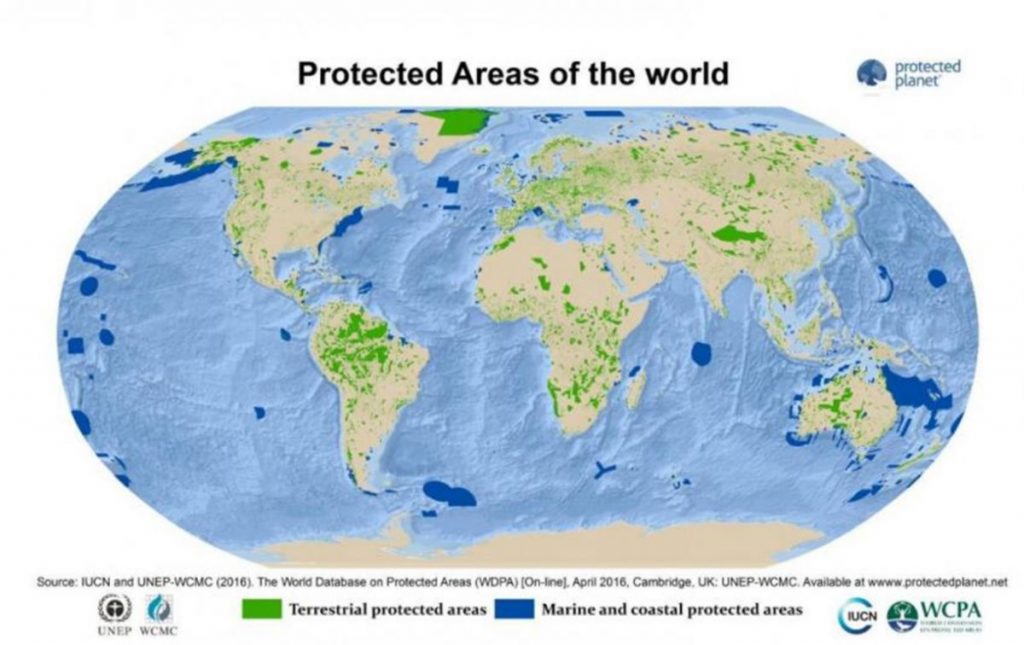
Is this time to rejoice, or is something darker at play?
To answer this question it is worth asking: Does this new virtue-driven order have anything to do with lifting people out of poverty or ending economic injustice?
Sadly, it is designed to do very much the opposite.
As we are coming to see, and as statesmen around the world are beginning to point out, this new order has more in common with oligarchical obsessions with controlling human cattle, and less to do with actually preserving the environment. The thousands of tons of CO2 emitted by private jets at Davos and COP26 represents on small aspect of this disingenuity.
Obrador Calls out the Game
On October 30, Mexico’s President Lopez Obrador called out this new virulent form of colonialism while presiding over a ceremony in celebration of the ongoing construction of the $6.7 billion high-speed Maya Train now being built in the southern regions of Mexico.
The project which would dramatically uplift living standards in Mexico by driving the growth of industrial and infrastructure production has fallen far behind schedule due in large part to vast legal battles led by indigenous groups who have been used as proxies by foreign interests to defend Mexico’s ecosystems. In many of the legal cases opposing the project, the argument has made that since several species of insect, fauna and even some leopards will be affected by the new railways, then the project must be ground to a halt and buried.
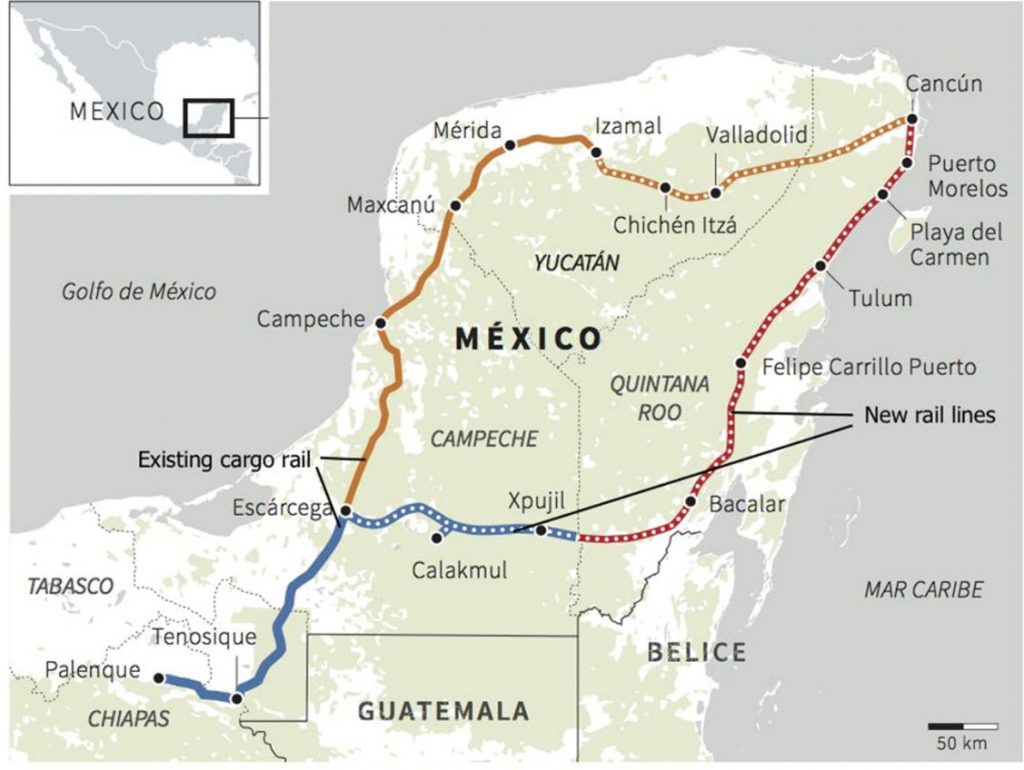
In his remarks to a journalist inquiring into the rail project, Obrador said:
“One of the things which they [the neoliberals] promoted in the world, in order to loot at ease, was the creation or promotion of the so-called new rights. So, feminism, ecologism, the defense of human rights, the protection of animals was much promoted, including by them. All these causes are very noble, but the intent was to create or boost all these new causes so that we don’t remedy—so that we don’t turn around and see that they were looting the world, so the subject of economic and social inequality would be kept out of the center of debate….The international agencies which supported the neoliberal model, which is a model of pillage where corporations grab national property, the property of the people—these same corporations financed, and continue to finance, environmentalist groups, defenders of ‘liberty.’ ”
Many people have been confused over these remarks since they cannot conceptualize how neoliberal monetarists that have parasitically driven the new age of pillage under globalization would also support such ‘new rights’ groups outlined by Obrador.
For nations of the global south who feel resentment that their rights to support their people by having their lands and resources kept off limits, they are told not to worry, since streams of money will be showered upon them from on high. Hundreds of billions of dollars worth of monopoly money will be sprayed onto the developing sector as rewards for remaining undeveloped.
If that isn’t sufficient, then carbon exchange markets will be set up so that poor nations can sell their un-used carbon quotas to private polluting companies (perhaps the same companies controlling the African cobalt mines which seek a monopoly in controlling the renewable energy sector). That is another way they can make money which at least can keep them warm at night as kindling since the world’s poor will not have to worry about having nature-killing hydro electric dams mucking up their pristine environments.
Even in the west where Biden’s 30×30 executive order has been signed into action, farmers will be offered money to stop grazing on soon-to-be protected lands, while a supposedly grassroots-based WWF-connected American Prairie Reserve (with a $160 million endowment) can be seen pushing a program designed to take 5000 square miles of grazing land in Montana out of use and converted into a pure ecosystem.
As President Obrador has alluded to, today’s billionaire-funded conservation movement simply seeks to take earth’s ecosystems out of bounds of any human economic activity under a new global feudal system of controls.
Even the indigenous populations which such billionaires profess to admire as role models for global “good behavior” are being monetized by these new green indices, with monetary values being placed not only on keeping land and water untouched, but also the very cultural ecosystems of indigenous groups around the world receiving dollar values which wealthy green financiers will somehow be able to invest into. To the degree that such immutably fixed patterns of indigenous lifestyles remain unchanged by the toxic pollution of modern technology or infrastructure, the more these eco-assets will be worth for whomever professes to invest in them. This may not be scientific but it is sick.
The term ‘feudal’ is in no way used for hyperbolic purposes, as we can see a stark parallel to the 12th century Europe, except that today’s aspiring feudal lords manage such companies as Blackrock, Vanguard, Google, Microsoft, Amazon and State Street and seek to punish all serfs from infringing on properties which only the nobility may control. Blackrock alone manages over $9 trillion in assets and $21.6 trillion in technology platforms and along with Vanguard is fast becoming one of the largest real estate owners in the USA with Bill Gates having recently become the largest owner of American farmland.
The Deeper Imperial Roots of Conservationism
With this vast imperial landgrab in mind, one should not be surprised to discover that the modern conservation movement actually finds its origins not in Greenpeace activists fighting poachers as mythmakers have cooked up, but rather in the bowels of the British Empire. It was this empire that innovated “nature conservation” regions in India during the late 19th century specifically to keep the poor of India under control after having destroyed India’s once powerful textile sector. The practice was applied across India during the greatest density of famines struck southern India in 1876 killing tens of millions. It was amidst this darkness that British Imperial overlords took the opportunity to create “The Imperial Forestry Department’ in 1876 putting two fifths of India’s lands under “protection” and off limits to humans. This ensured no starving subject could use the protected zones which they had relied upon for survival for decades for food, or water.
The Nazi embrace of both Anglo-American funded science of eugenics on the one side and the Reich’s embrace of nature conservationism were also not unconnected. Herman Goring, who served as Minister for German Forests believed in a poisonous worldview that held that: 1) nature is pure and thus good due to its pure unchanging natural order while 2) humanity is impure and thus un-natural due to our aspirations for progress. This dangerous equation resulted in seemingly innocent programs launched by the Fuhrer and Goring to cleans the German ecosystems of all foreign and thus un-natural fauna and flora in order to return the forests of Germany to their supposedly pure pre-industrial states. The worship of nature was an integral part of the new master race and the weeding out of impurities extended itself to human genetics following racial theories advanced by British eugenicists and anthropologists.
Julian Huxley’s New Eugenics Revolution
Upon Hitler’s defeat, the repackaging of eugenics took the form of British Eugenics Society Vice President Julian Huxley’s outline in the founding Manifesto for UNESCO where he said:
“At the moment, it is probable that the indirect effect of civilization is dysgenic instead of eugenic, and in any case it seems likely that the dead weight of genetic stupidity, physical weakness, mental instability and disease proneness, which already exist in the human species will prove too great a burden for real progress to be achieved. Thus even though it is quite true that any radical eugenic policy will be for many years politically and psychologically impossible, it will be important for UNESCO to see that the eugenic problem is examined with the greatest care and that the public mind is informed of the issues at stake so that much that is now unthinkable may at least become thinkable.”
Putting this new eugenics into practical action took on many heads of a hydra in the post WWII years. The particular hydra head most relevant to the thrust of this article took the form of another project Julian created in 1948 called the International Union for the Conservation of Nature (IUCN) followed soon thereafter by the World Wildlife Fund (WWF) in 1961 which he co-founded alongside two misanthropic princes named Philip Mountbatten and Bernhardt of the Netherlands.
Between 1959 and 1962 Julian had risen to become president of the British Eugenics Society and had put the finishing gloss on a new field of scientific misanthropic theology which he dubbed ‘Transhumanism’ alongside a Jesuit collaborator named Pierre Teilhard de Chardin.
If you haven’t guessed, Transhumanism was merely another form of re-packaged eugenics serving the spiritual needs of a new priesthood of elitist social engineers that would be expected to manage the gears of a new technocratic feudal machine. This neo-paganism is not intrinsically different from the cultish beliefs of the Nazi Thule society of the past which gave spiritual direction to the members of Hitler’s government.
The neo-Malthusian revival that these eugenicists would spearhead through the end of the 1960s took the form of a new array of international organizations which incorporated systems analysis, and cybernetics, which aimed to control nation states and ecosystems alike. This took the form of the World Economic Forum’s early embrace of the Club of Rome’s computer models outlined by Aurelio Peccei (and incorporated into Schwab’s second official Davos meeting in 1973).
These new models aimed to impose fixed immutable limits to humanity’s growth potential beyond which no technology or scientific discovery could ever penetrate. The fact that these same multibillionaires managing the overhaul of the world economy as it transitioned into a neo-liberal looting operation were simultaneously funding the growth of this new array of “new rights” groups led by a growing armada of non-governmental organizations, ecology protection and human rights groups is not a coincidence.
Today’s involvement of both Julian Huxley’s WWF and IUCN (no renamed Conservation International) as partners with the Intrinsic Exchange Group should not make any honest lover of nature in any way comfortable.
Much more obviously remains to be said both about the history of conservationism, and how it is being used once again to conduct a new age of population control, or how it has been used to disrupt large scale infrastructure projects across the world for over 120 years, or how nature reserves across the global south have supported narco terrorist groups.
However, for the time being, it is sufficient to note that the world’s developing sector is generally not going to accept being sacrificed on the altar of a new Gaia cult managed by a priesthood of Davos billionaires.
Based on the momentum we see being driven by the Greater Eurasian Partnership, the Belt and Road Initiative and ambitions from Latin American and African leaders to finally break free of centuries of imperial manipulation, it is becoming increasingly obvious that COP26’s utopic computer models are increasingly breaking down when confronted with the reality of humanity’s creative power to leap outside of the fixed rules of imperial games when a true crisis moves us into action.
Matthew J.L. Ehret is a journalist, lecturer and founder of the Canadian Patriot Review.
You can actually participate in the global efforts to cripple the Deep State organized criminal cabal's ability for genocide, while enjoying healthcare freedom at the same time, by boycotting Big Pharma for good.
COPYRIGHTS
Copy & Paste the link above for Yandex translation to Norwegian.
WHO and WHAT is behind it all ? : >
The bottom line is for the people to regain their original, moral principles, which have intentionally been watered out over the past generations by our press, TV, and other media owned by the Illuminati/Bilderberger Group, corrupting our morals by making misbehavior acceptable to our society. Only in this way shall we conquer this oncoming wave of evil.
Commentary:
Administrator
HUMAN SYNTHESIS
All articles contained in Human-Synthesis are freely available and collected from the Internet. The interpretation of the contents is left to the readers and do not necessarily represent the views of the Administrator. Disclaimer: The contents of this article are of sole responsibility of the author(s). Human-Synthesis will not be responsible for any inaccurate or incorrect statement in this article. Human-Synthesis grants permission to cross-post original Human-Synthesis articles on community internet sites as long as the text & title are not modified